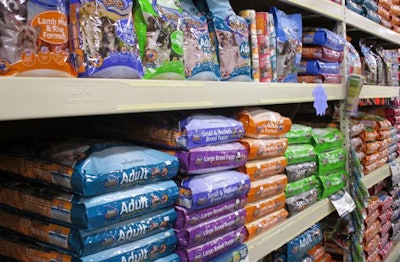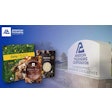
Packaging is often the first line of offense in a product’s ability to sell itself, and in pet food packaging the stakes have been significantly raised by packed shelf space at the premium and superpremium levels, as well as hot topics and challenges coming from pet food customers. Words like sustainability and eco-friendly are becoming common in a mix that already includes such mainstays as branding and convenience.
The successes and challenges of sustainability in pet food packaging
Choosing sustainable or eco-friendly packaging seems to be a primary factor in several recent pet food packaging revamps and releases, and in speaking to packaging companies, that demand seems to have challenges that include everything from intensive time investments to the limitations of current technology.
“It is challenging yet equally important for brands and converters to deliver solutions that are validated and endorsed by accredited organizations,” said Mark Liberman, vice president of sales and marketing with Peel Plastics. “This is a challenging area and requires a sincere commitment.”
That commitment must come from everyone involved in pet food as pet owners continue to ask more of the products they buy.
“Consumer demands for sustainability continue to rise,” said Blaine Johnson, business development director for Tetra Recart. “In fact, recent research we conducted in partnership with Ipsos revealed 43 percent of consumers say that an environmentally sound package makes them much more likely to consider the brand, and half of them say that it makes the brand worth more than it cost.”
Demands, however, don’t provide solutions out of thin air, and a lot of work goes into meeting these challenges when pet food manufacturers come to their packaging suppliers with questions and hopes for answers.
“Sustainability is an important topic for both brand owners and packaging solution providers,” said Liberman. “We have been working diligently for the past few years to bring legitimate solutions to the market. Peel was an early adopter of Bio PE (bio-based polyethylene) and have supported a number of brands who made a positive impact by delivering packaging solutions that significantly reduce CO₂ emissions. In conjunction with this positive impact, the Bio PE solution they have chosen has been validated by the U.S. Department of Agriculture (USDA) with a bio package certification (the USDA Certified Biobased Product label).
The multi-faceted connections between branding and pet food packaging
If sustainability is a message a company wants to send to its customers, packaging is the most obvious way to convey it.
“Brands recognize that their choice of packaging serves as an extension of the product and brand image,” said Johnson. Tetra Pak cartons have been one such item considered on the wet pet food side due to attributes such as renewable and lightweight materials and space efficiency, all of which play into the larger scheme of sustainability at multiple steps in the pet food process.
But it’s not all about sustainability and eco-friendliness when it comes to branding. Pet food companies are still trying to tell their stories, as well as stand out on a growing playing field with less available visual space, and they expect their packaging suppliers to help them further those goals. Packaging experts, in turn, are developing new technologies as quickly as possible to make that happen.
“Brands are pushing the boundaries with some of the new printing technologies Peel has invested in and delivering vibrant pet and/or ingredient images,” said Liberman. “The effort by brand owners to make their product or specific diets easier to recognize has created truly outstanding shelf sets.”
The envelope is constantly being pushed as pet food manufacturers attempt to come up with the next eye-grabbing tactic to snag a potential customer’s attention, particularly in the premium and superpremium spaces, where shelf space is in short supply.
“I am seeing advancements in overall package design, including higher print quality and the incorporation of foil and other treatments to enhance graphics, both of which help enhance the premium look of the packaging,” said Johnson.
In short: Other pet food packaging trends
- Convenience, particularly when it comes to closure options
- Package styles, particularly with regards to available “real estate” for branding messages and overall look on the pet store shelf
- E-commerce, specifically how to develop packaging products that perform well in that space
For the full companion article, " How pet food packaging keeps brands, products relevant,” published in the September 2018 issue of Petfood Industry magazine, see www.PetfoodIndustry.com/articles/7398.











